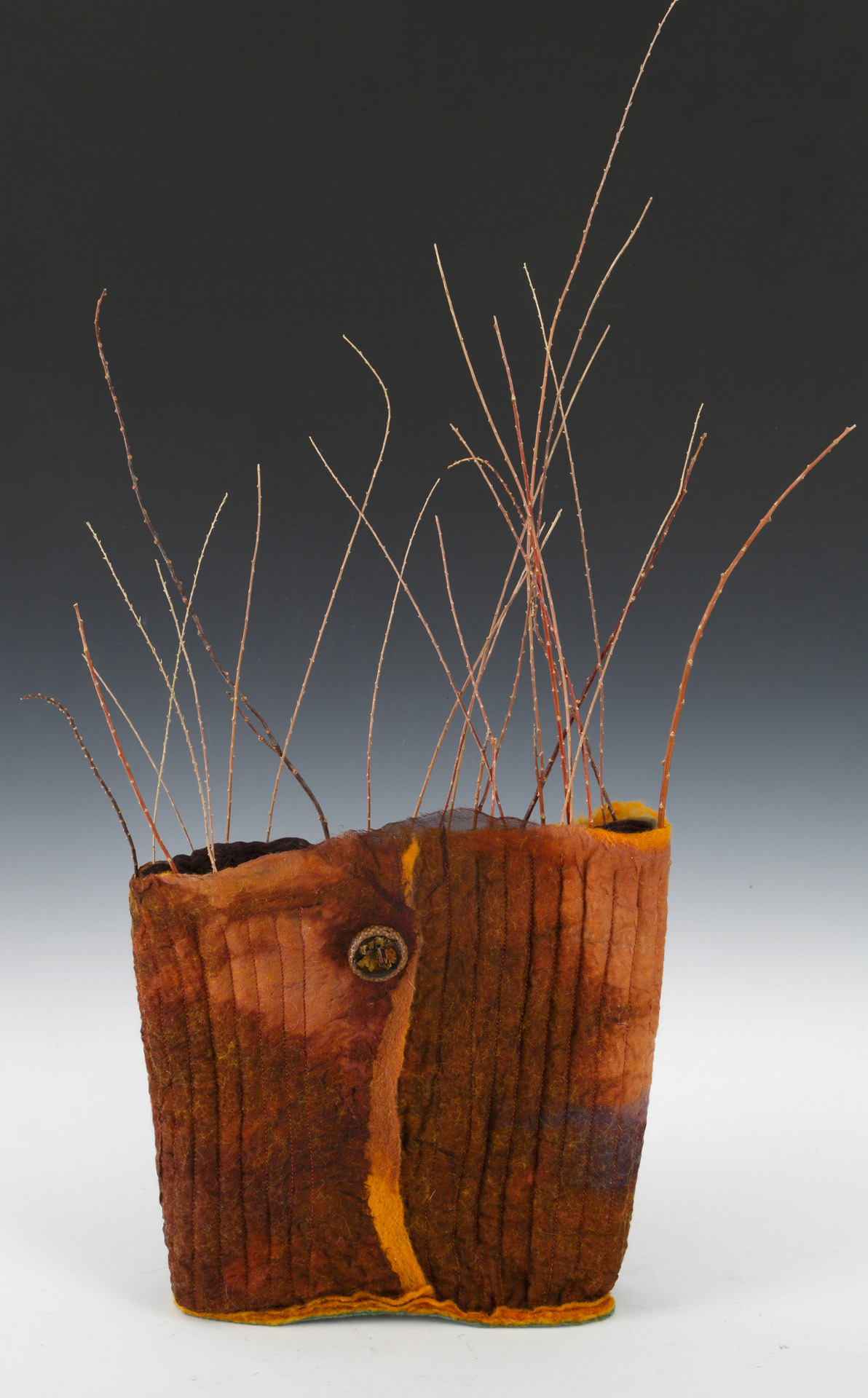“Fire, the most dramatic of the four elements. You can't make excellent bourbon without it.” – M.J. Kinman
"Char #4" by M.J. Kinman, Hand-painted cotton; poly batting; poly thread, 48x81in, 2017, $6500
M.J. Kinman creates fiber art compositions of geometric shapes in kaleidoscopic patterns. In her Bourbon Diamonds Series she captures the fire and brilliance of Kentucky's iconic spirit, with each piece inspired by a particular label from Kentucky’s most famous export. For example, “Char #4” recognizes Old Forester bourbon's heritage of crafting their barrels themselves, a process that requires setting the new oak aflame.
“Bourbon isn't bourbon without fire,” explains Kinman.“Unless the interior of a new oak barrel is allowed to burn, there can be no blackening and crackling of the wood. Those tiny cracks invite the whiskey to penetrate the oak during the hot, lazy Kentucky summers, providing it's amber and smoky tones.”
“I make the biggest diamonds in the world…but instead of working with the hardest substances on Earth, I work with the softest. For the past 20 years, I’ve used fabric and paint to create larger-than-life portraits of colored gemstones. My goal is to find a stone’s personality – the story of light and color – encased within. This work, part of my Bourbon Diamonds series, celebrates the importance of fire in the making of Kentucky bourbon.”
"Fire & Ice" by M.J. Kinman, Hand-painted cotton; poly batting; poly thread, 82x50in, 2017, $7500
Kinman will be showing at the Jackson Dinsdale Art Center at Hastings College in Hastings, Nebraska, January 2 through 30, 2018. There will be an Artist’s Reception on Friday, January 12.
M.J. Kinman will be participating in the 2017 Open Studio Weekend, sponsored by Louisville Visual Art and University of Louisville’s Hite Art Institute. Her studio, located in the Clifton neighborhood, will be open the weekend of November 4 and 5. Tickets for Open Studio Weekend will go on sale October 16. Click here for more information.
Hometown: Hastings, Nebreska
Age: 55
Education: Bachelors of Social Work (BSW), Bowling Green State University Bowling Green, Ohio; Masters in Social Work (MSW), University of Michigan Ann Arbor, Michigan
Website: www.mjkinman.com
Instagram: mjkinman709
Scroll Down To See More Images
"Angel's Share" by M.J. Kinman, Hand-painted cotton; poly batting; poly thread, 58x58in, 2017, $5500
"Devil's Due" by M.J. Kinman, Hand-painted cotton; poly batting; poly thread, 53x78in, 2016, $7500
"Blush" by M.J. Kinman, Hand-painted cotton; poly batting; poly thread, 85x55in, 2014, $7500
Written by Keith Waits. Entire contents copyright © 2017 Louisville Visual Art. All rights reserved
Are you interested in being on Artebella? Click here to learn more.







































